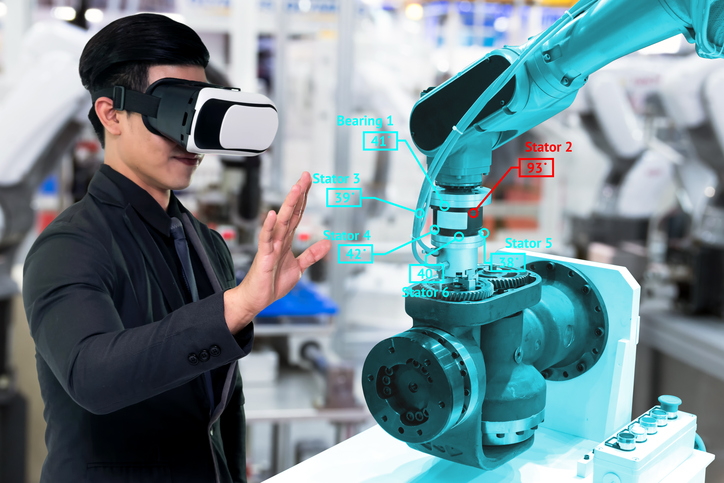How Virtual Reality Can Revolutionize Industrial Robot Design

Virtual reality (VR) is often seen as a futuristic tool for entertainment and gaming, but its applications extend far beyond the consumer space. In fact, VR is increasingly being used in industrial settings to enhance the design and development of robotic systems. This powerful technology offers engineers and end users a new way to visualize, test, and refine robotic solutions before they are built.
One of the most significant benefits of VR in industrial robot design is its ability to create immersive simulations. These simulations allow engineers to explore a robotic system in a virtual environment, identifying potential issues or inefficiencies that might not be visible through traditional 2D blueprints or CAD models. This level of detail helps ensure that the final product is both functional and efficient.
The Role of VR in Enhancing Industrial Robot Design
By integrating VR into simulation software, engineers can experience a robotic system as if it were already installed. This immersive approach enables teams to collaborate more effectively, making real-time adjustments and improvements. It also allows for a more thorough testing of motion paths, collision detection, and overall system performance before any physical components are manufactured.
Moreover, VR fosters better communication between design engineers and other stakeholders. With a shared virtual workspace, teams can walk through the system together, discuss challenges, and brainstorm creative solutions. This collaborative environment encourages innovation and leads to more refined, user-focused designs.
Benefits for End Users in Industrial Robot Design
End users also gain a lot from VR-based simulations. They can get a realistic view of how a robotic system will operate within their facility, helping them understand the layout, workflow, and potential impact on daily operations. This transparency builds trust and confidence in the design process.
Additionally, VR gives end users the opportunity to provide feedback early in the design phase. Their input can lead to improvements that make the system more tailored to their specific needs. This ensures that the final robotic solution is not only technically sound but also practical and user-friendly.
Another advantage is that VR can help identify complex or unusual scenarios that might not be apparent during initial planning. By simulating these situations in a virtual space, engineers can fine-tune the system to handle real-world conditions with greater accuracy and reliability.
In summary, VR is transforming the way industrial robots are designed. It enhances precision, improves collaboration, and empowers both engineers and end users to make informed decisions. As this technology continues to evolve, its role in shaping the future of automation will only grow stronger.
If you're interested in learning more about how VR is being used in industrial robotics, check out Genesis Systems Group’s 3DG Environment—a groundbreaking VR platform designed for complete immersion in robotic system design. It's one of the few tools of its kind that truly brings the future of automation to life.
Posted in Robotic Applications- ✨High-quality 3mm Meoprene Theiving suit gloves are made of high quality 3mm neoprene material and can be used for a long time. Protect your hands from hurting by sharp objects or other poisonous creatures
- ✨Unique Design The unique design adds flexibility, making the gloves easier to put on and take off, and the elastic adjustable velcro wristband improves the tightness of the wrist cuffs.
- ✨Non-slip Granules Gloves with non-slip particles allow you to grab moorings without the risk of injury ,and protect your hands from rocks or other sharp objects
- ✨High elasticity and durability high elasticity and excellent recovery, Glued and blind stitched for superior strength and durability, minimizing cold water inflow and keeping your hands warm and comfortable.
- ✨Wide range of applications Perfect for surfing, water skiing, diving, surfing, kayaking, Scuba diving, snorkeling, white water rafting, pedal boarding and all other water sports.
Neoprene Gloves,Neoprene Gloves Swimming,Neoprene Work Gloves
Huaian Boshi Sports Products Co.,Ltd , https://www.cnboshisports.com